ANIMALS
30 Toughest Animals That Will Do Anything To Survive
Published
12 months agoon
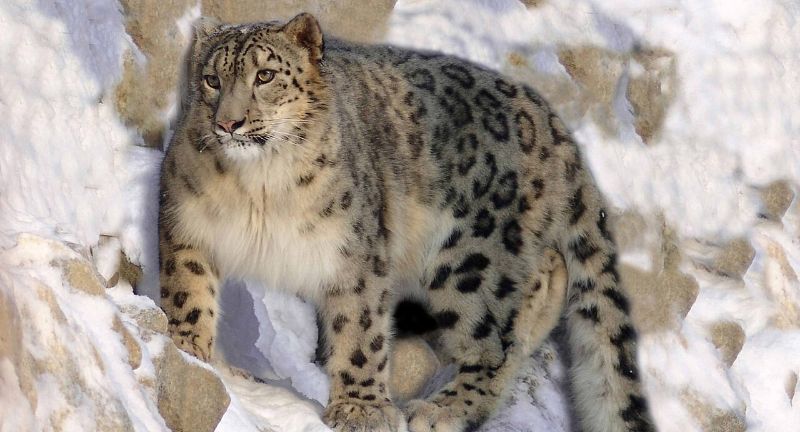
Shutterstock
In the vast expanse of Earth’s biodiversity, every creature has honed its own survival techniques, adapting to environments ranging from freezing tundras to scorching deserts. Whether it’s the camel’s ability to endure long journeys without water or the remarkable resilience of tardigrades in extreme conditions, each species exemplifies nature’s ingenuity in overcoming adversity. This examination of 30 remarkable animals’ survival strategies provides insight into the remarkable diversity and interconnectedness of life, underscoring the delicate balance between organisms and their surroundings.
Polar Bears
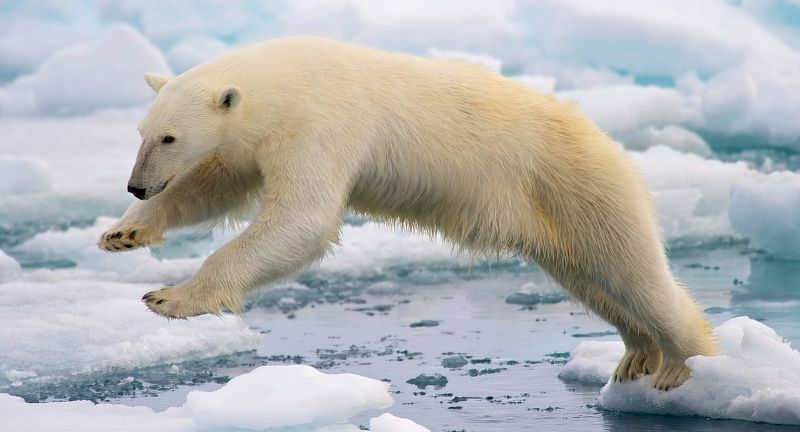
Wikipedia
Polar bears, as the Arctic’s apex predators, excel in hunting seals, utilizing their remarkable swimming skills to traverse icy waters. Their insulated fur and fat layer protect them from the frigid temperatures, while their white coat serves as effective camouflage in the snowy landscape. These bears’ survival hinges on the health of their Arctic habitat, now imperiled by the impacts of climate change, which disrupts their access to crucial sea ice platforms for hunting.
Giraffes
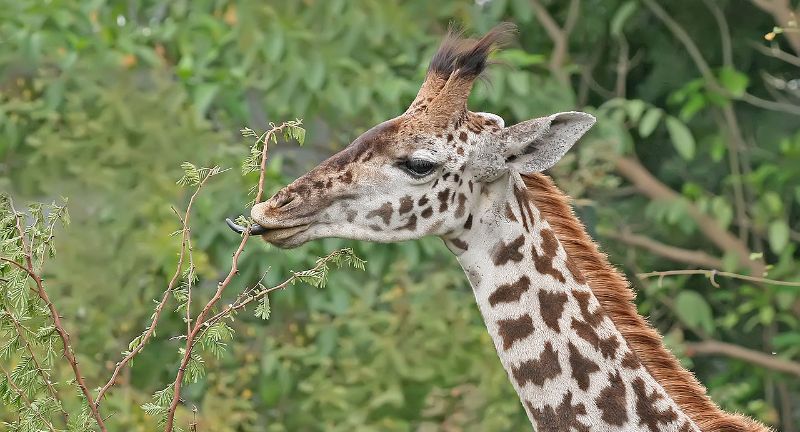
Wikipedia
Giraffes, the towering giants of the savanna, possess elongated necks that grant them access to foliage beyond the reach of other herbivores, ensuring a steady food supply. Their specialized cardiovascular system effectively regulates blood pressure, preventing fainting episodes when they lower their heads to drink water. Additionally, their towering stature affords them a strategic vantage point, enabling them to scan the horizon for potential threats from afar, showcasing their adaptability and survival strategies in the African wilderness.
Axolotls
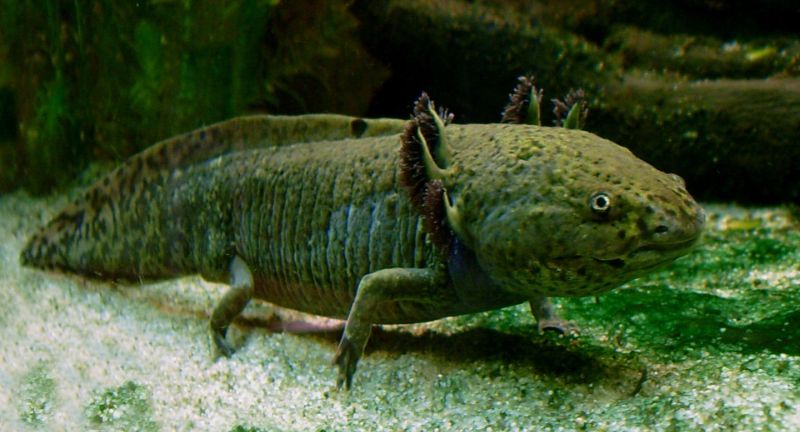
Wikipedia
Axolotls, famed for their remarkable regenerative prowess, can regenerate lost body parts, including limbs, heart tissue, and segments of their brain, offering valuable insights for potential medical breakthroughs in humans. Unlike many other amphibians, axolotls remain in their larval stage throughout their lives, inhabiting exclusively aquatic environments. Their unique combination of adaptability and regenerative capabilities positions them as pivotal subjects for scientific investigation, shedding light on the diverse array of survival mechanisms across species.
Camels

Wikipedia
Camels epitomize desert survival with their remarkable adaptations, capable of enduring prolonged periods without water. They store fat in their humps, serving as a reservoir for water and energy during times of scarcity. Their capacity to regulate body temperature minimizes water loss through sweating, while specialized features like thick eyelashes and sealable nostrils shield them from abrasive sand, showcasing their mastery of arid environments.
African Elephants
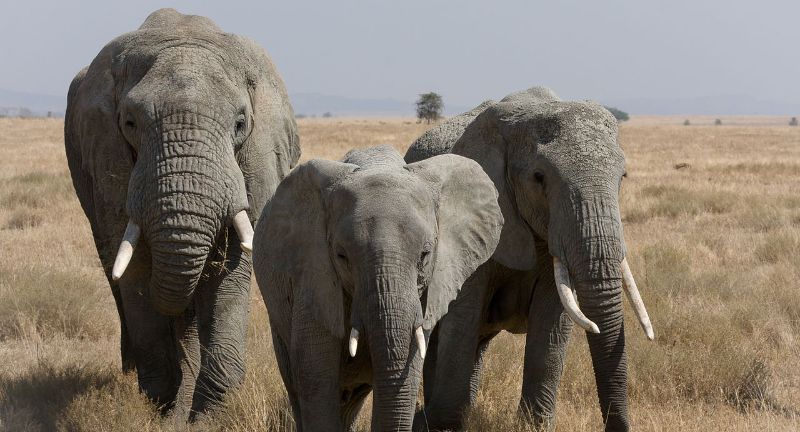
Wikipedia
African elephants, the largest terrestrial mammals, rely on their remarkable memory and intelligence to thrive in the wild. They traverse extensive territories, leveraging their exceptional recall to locate vital resources like waterholes across seasons. Living within intricate social networks, elephants benefit from collective defense and communal knowledge sharing, crucial for offspring rearing and foraging success. Their adeptness at adapting to diverse habitats and utilizing tools, such as modifying branches for various purposes, highlights their cognitive prowess and adaptability in the pursuit of survival.
Cheetahs
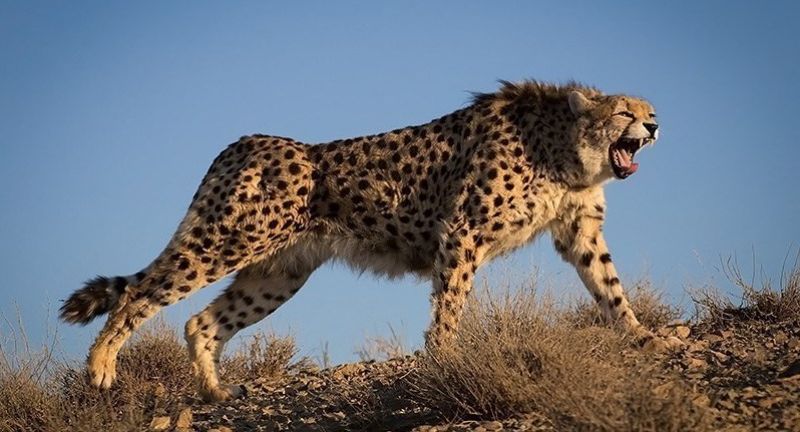
Wikipedia
Cheetahs’ renowned speed, reaching up to 75 mph in short sprints, enables them to catch elusive prey, although they require rest afterward due to overheating. Their sleek, aerodynamic bodies, with large nasal passages and long tails for balance, are finely tuned for swift pursuits. Efficient hunting is crucial for cheetah survival, showcasing their remarkable adaptation to thrive in their environment.
Kangaroo Rats
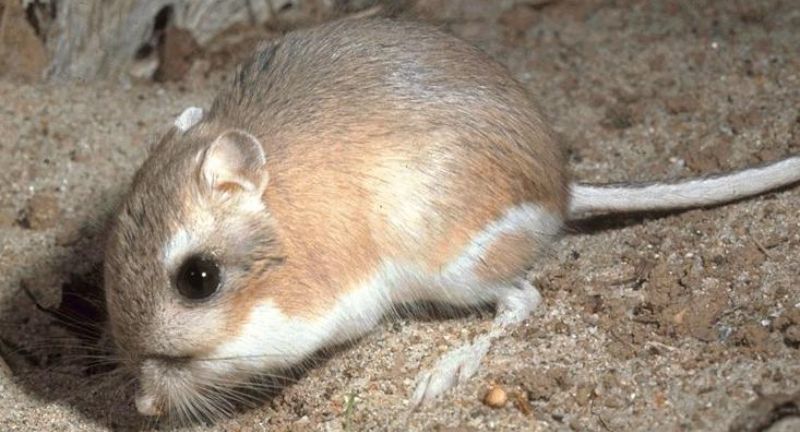
Wikipedia
Kangaroo rats, adapted to desert life, obtain all necessary moisture from their seed-based diet, conserving water through efficient kidneys and a nocturnal lifestyle. Their long hind legs facilitate leaping, aiding in evading predators and foraging efficiently. These adaptations enable kangaroo rats to flourish in arid environments, showcasing their remarkable ability to thrive where other species might falter.
Penguins
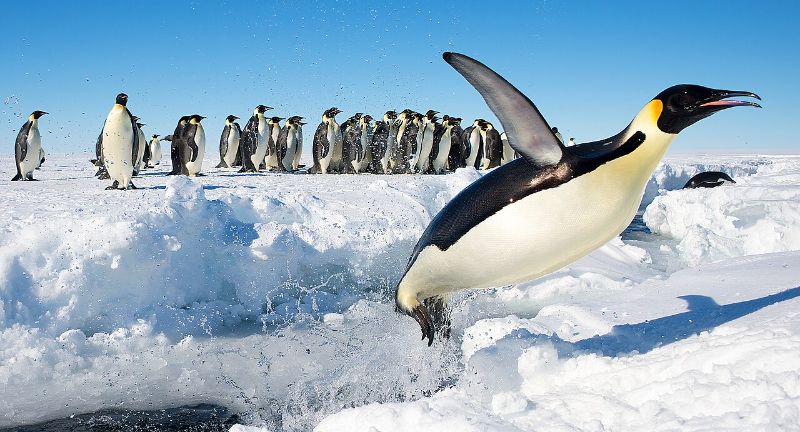
Wikipedia
Emperor penguins brave the harsh Antarctic winter by forming huddles, rotating positions to maximize warmth sharing and energy conservation. Their dense feathers and blubber offer insulation against freezing temperatures, while cooperative breeding and parental care ensure offspring survival. This remarkable resilience and cooperative behavior enable emperor penguins to thrive in one of the most extreme environments on the planet.
Wolverines
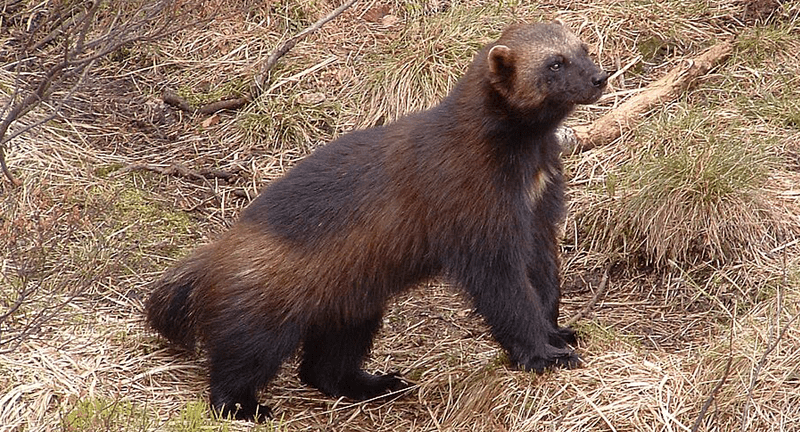
Shutterstock
Wolverines, symbols of wilderness and resilience, thrive in harsh climates with their dense fur coats and formidable strength. They hunt prey larger than themselves and scavenge for food, even consuming frozen meat with their powerful jaws. With vast territorial ranges and solitary habits, wolverines display remarkable adaptability, surviving in diverse environments from dense forests to snowy mountains. Their resilience makes them one of the most adaptable survivors in the animal kingdom.
Frogs
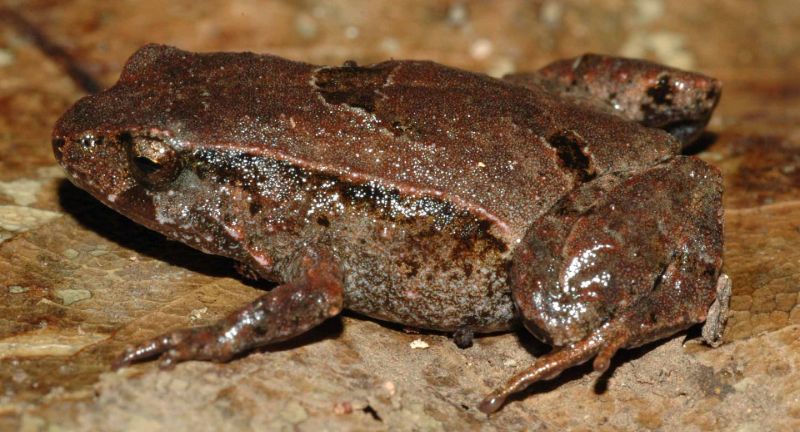
Wikipedia
Frogs employ a remarkable survival strategy called cryogenic freezing, enabling them to endure freezing temperatures by slowing their vital processes. During this state, their heart stops, and blood ceases to circulate until thawing occurs. This adaptation allows frogs to survive harsh winter climates, with their bodily functions resuming upon thawing. Cryogenic freezing showcases frogs’ remarkable ability to adapt and thrive in extreme environmental conditions.
Bats
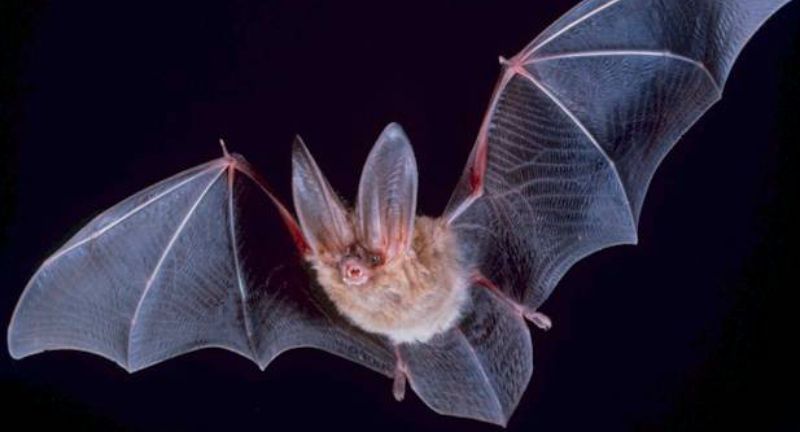
Wikipedia
Bats, the only mammals capable of sustained flight, utilize echolocation to navigate and hunt in darkness, detecting prey with remarkable precision while avoiding obstacles and predators. Their nocturnal lifestyle minimizes competition for food and reduces exposure to daytime predators. Bats fulfill vital ecological roles as predators of night-flying insects, as well as pollinators and seed dispersers, underscoring their adaptability and significance in maintaining ecosystem balance.
Mudskippers
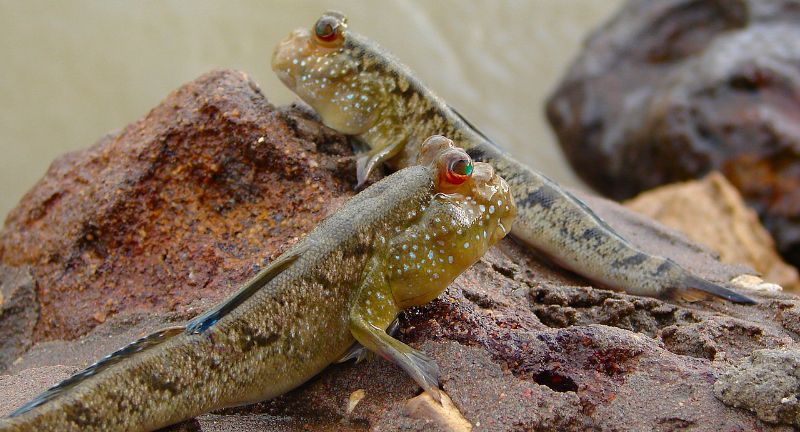
Wikipedia
Mudskippers possess a remarkable adaptation that allows them to spend extended periods on land, utilizing their pectoral fins to walk and absorbing oxygen through their skin and the lining of their mouth and throat. This unique ability enables them to forage for food on mudflats, avoiding aquatic predators and exploiting a niche with limited competition. They can retain water in their gill chambers to keep their gills moist, vital for their survival during land excursions. Mudskippers exemplify life’s adaptability, thriving in environments that straddle the boundary between water and land.
Mountain Goats
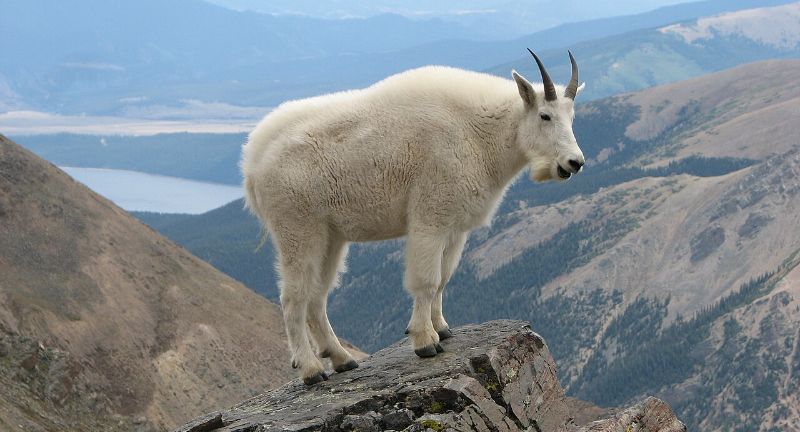
Wikipedia
Mountain goats are celebrated for their extraordinary agility and balance, enabling them to traverse steep and rocky terrain inaccessible to many predators. Their hooves are uniquely adapted with a hard outer rim and a soft, grippy center, facilitating secure footing on precarious ledges. This specialized climbing ability grants them access to high-altitude meadows and provides escape routes from predators, ensuring their survival in rugged environments. Mountain goats’ remarkable adaptation to their harsh habitat underscores the lengths to which animals will evolve to thrive in challenging conditions.
Octopuses
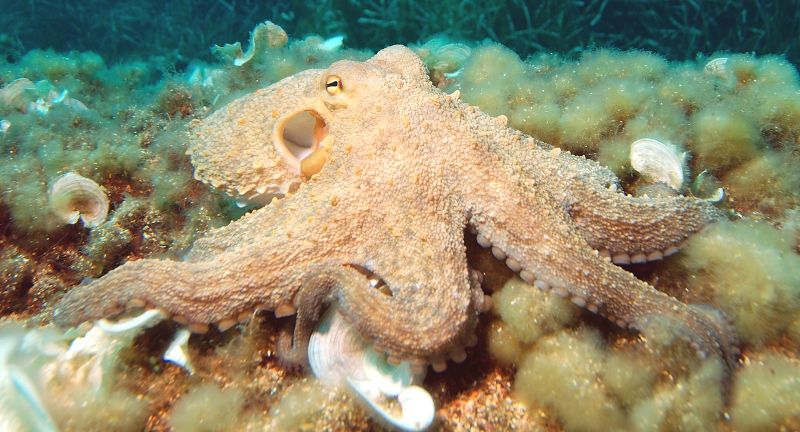
Wikipedia
Octopuses are renowned for their remarkable intelligence and adaptability, demonstrating the ability to change color and texture to camouflage themselves and evade predators or ambush prey. Their soft bodies allow them to squeeze through tiny spaces with ease, showcasing their agility and flexibility. Additionally, octopuses have been observed using tools, such as coconut shells, for shelter, highlighting their problem-solving skills and resourcefulness. These cognitive abilities, coupled with their capacity to learn, remember, and navigate complex environments, exemplify the sophisticated survival strategies developed by these fascinating cephalopods.
Squirrels
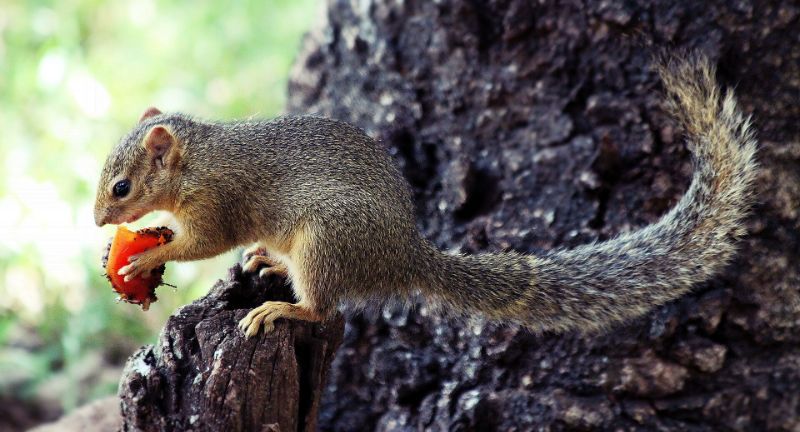
Wikipedia
Squirrels are renowned for their adaptability, particularly their skill in caching food for winter survival, relying on their exceptional spatial memory to retrieve stored food when needed. They demonstrate flexibility in foraging behavior, adjusting their strategies based on factors like predator activity and weather conditions. With their agility and speed, squirrels can swiftly evade predators, utilizing their keen sense of smell to locate hidden food reserves even under layers of snow or soil.
Meerkats
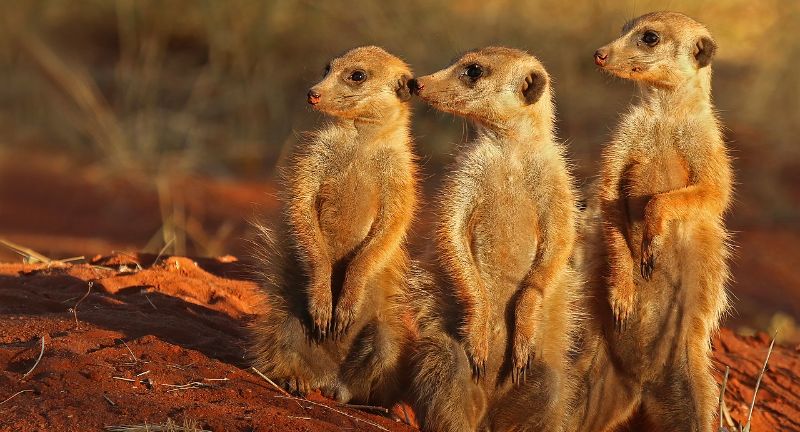
Wikipedia
Meerkats thrive in the challenging African savanna by relying on teamwork and cooperation. They assign sentinel duties to members, who stand guard while others forage, enhancing their ability to detect and evade predators. This social structure fosters strong bonds within the group, evident in behaviors like grooming and food sharing, which contribute to their collective survival in the harsh environment.
Sea Turtles
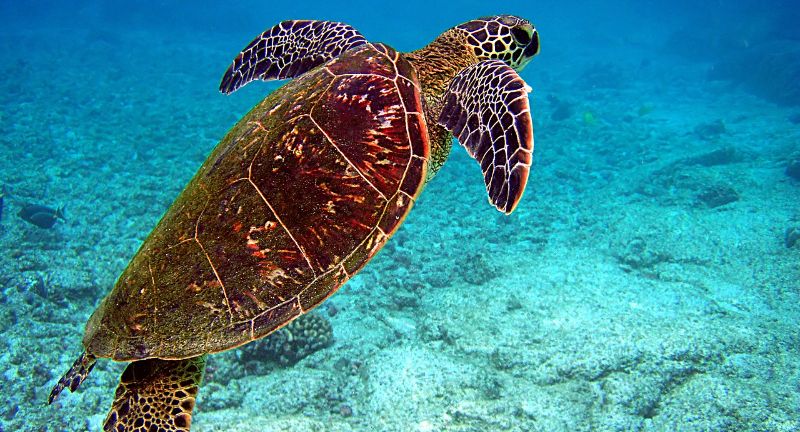
Wikipedia
Sea turtles embark on incredible migrations, guided by an innate sense of navigation that utilizes Earth’s magnetic field. Their ability to return to their birth beach to lay eggs showcases an extraordinary homing instinct honed over millennia. Despite facing threats from human activities, their long-distance journeys remain critical for their survival as they navigate through changing ocean conditions.
Desert Foxes
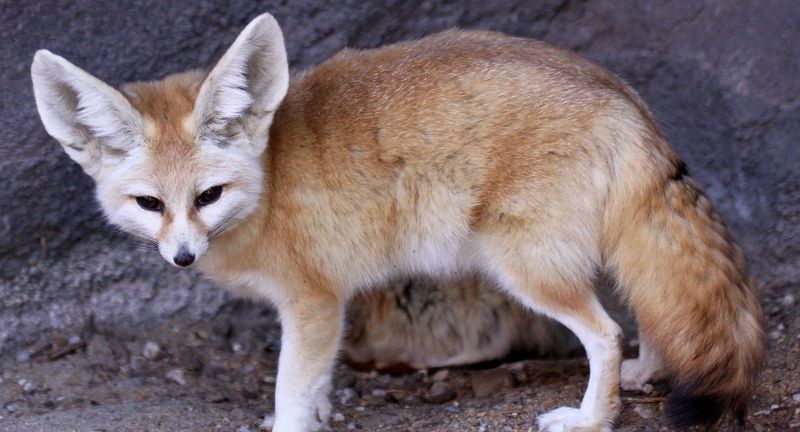
Wikipedia
Fennec foxes, renowned for their distinctive large ears, excel in the desert environment by using these ears to dissipate heat. Their thick fur on the soles of their feet shields them from the scorching sand, facilitating easy movement across the desert terrain. These nocturnal predators rely on their acute hearing to locate prey underground, feeding on insects, small mammals, and plants. Through their burrowing behavior and other adaptations, Fennec foxes effectively navigate their arid habitat, finding refuge from the harsh climate and potential predators.
Orangutans
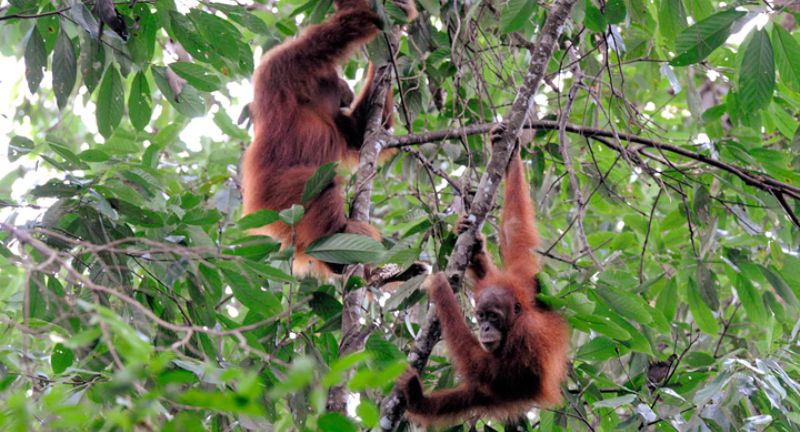
Wikipedia
Orangutans, renowned for their high intelligence, predominantly inhabit the trees, showcasing impressive problem-solving skills and tool usage. Each night, they construct intricate sleeping nests from branches and foliage, illustrating their adaptability and environmental manipulation abilities. While their diet primarily comprises fruit, they exhibit flexibility by also consuming leaves, bark, and insects. However, their survival is imperiled by the degradation of the tropical rainforests in Borneo and Sumatra due to deforestation and human activities.
Honeybees
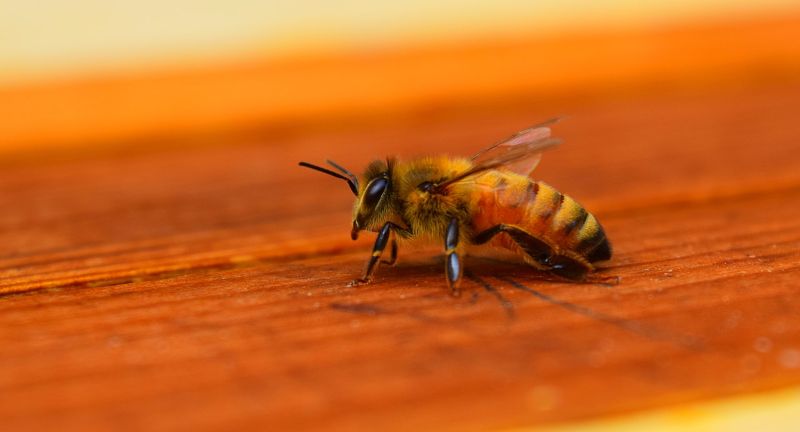
Wikipedia
Honeybees are indispensable pollinators, facilitating the growth of various crops and flowering plants essential for ecosystems. Through the intricate “waggle dance,” they communicate precise information about food sources to their hive mates, ensuring efficient foraging. Demonstrating remarkable teamwork, honeybees maintain hive functions, gather nectar, and produce honey, highlighting their collective efficiency and cohesion. Their well-defined social structure, delineated by roles among workers, drones, and the queen, is fundamental for colony survival and productivity.
Snow Leopards

Wikipedia
Snow leopards, elusive denizens of Central and South Asian mountains, are equipped with thick fur and robust physique, aiding their traversal of rugged terrain and harsh climates. Their natural camouflage seamlessly integrates them into rocky landscapes, essential for stealthy hunting. Despite their solitary nature, snow leopards maintain expansive territories, relying on keen senses to locate prey in sparse habitats. Their resilience in extreme environments underscores their adaptability, though they face grave threats from habitat degradation and poaching.
Leafcutter Ants
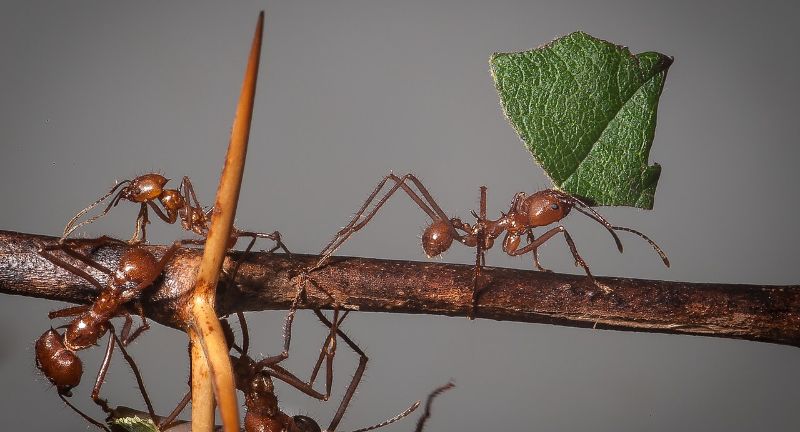
Wikipedia
Leafcutter ants, renowned for their leaf-cutting prowess, exhibit a captivating behavior of transporting foliage to their colonies for fungal cultivation, forming a symbiotic relationship that ensures a consistent food supply. Within their highly organized societies, distinct roles such as workers, soldiers, and gardeners emerge, contributing to the colony’s efficiency and longevity. Through their intricate agricultural practices and ecosystem engineering, leafcutter ants showcase a remarkable level of cooperation and adaptation unparalleled in the insect kingdom.
Mongoose
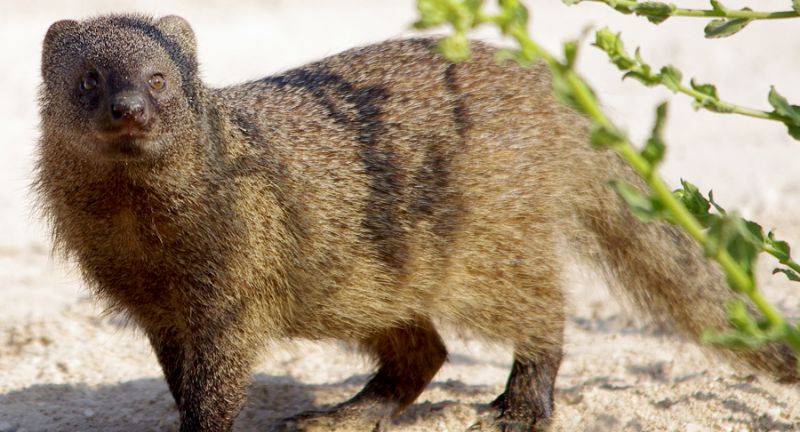
Wikipedia
Mongooses, celebrated for their prowess in combating venomous snakes, demonstrate exceptional agility and reflexes, enabling them to evade the lethal strikes of their serpentine adversaries. Through evolutionary adaptations such as specialized acetylcholine receptors, mongooses have developed resistance to snake venom, granting them a crucial advantage in these life-threatening confrontations. Their fearless demeanor and hunting proficiency are integral to their survival in habitats where encounters with venomous snakes pose a constant threat.
Bearded Vultures
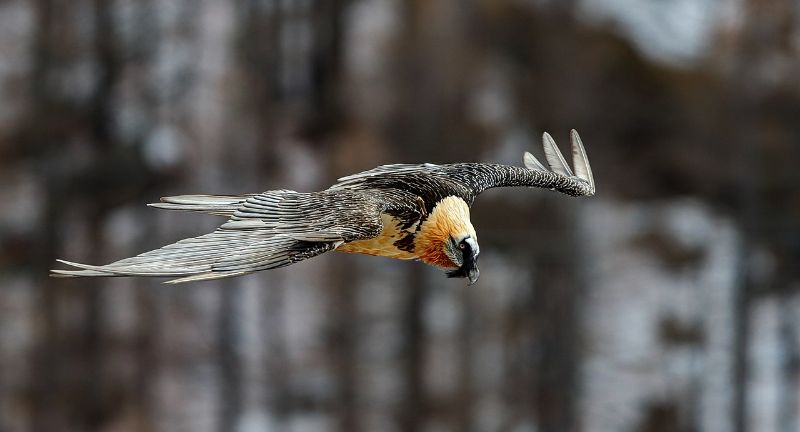
Wikipedia
Bearded vultures stand out in the avian world for their specialized diet, predominantly comprising bones. Their exceptionally acidic stomachs enable them to digest bone matter, extracting nutrients from what other predators discard. Employing a unique hunting strategy, they drop large bones from significant heights onto rocks, breaking them into smaller, consumable pieces. This adaptation to a bone-centric diet exemplifies niche specialization, ensuring their survival in environments where competition for such an unconventional food source is minimal.
Platypuses
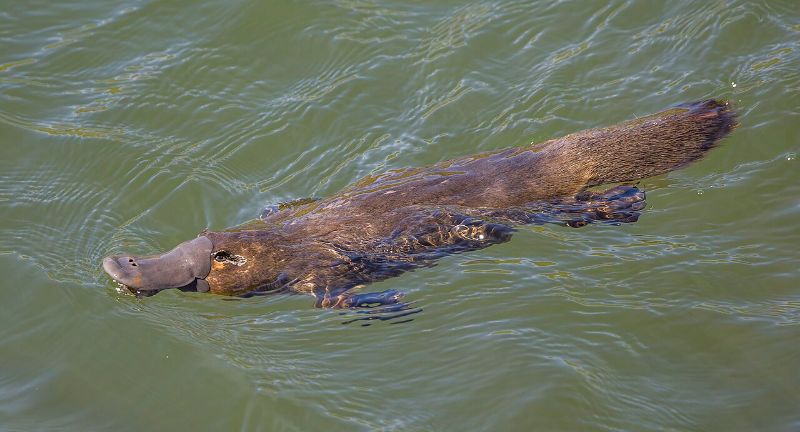
Wikipedia
Platypuses captivate researchers with their intriguing blend of mammalian and reptilian characteristics, including their egg-laying reproductive strategy. Their bill is equipped with electroreceptors, enabling them to detect the electric fields generated by prey muscle contractions underwater. This distinctive hunting method proves particularly effective in murky waters with limited visibility. Platypuses’ adeptness at foraging and navigating in aquatic habitats underscores the diverse range of evolutionary adaptations that facilitate survival across the animal kingdom.
Arctic Foxes
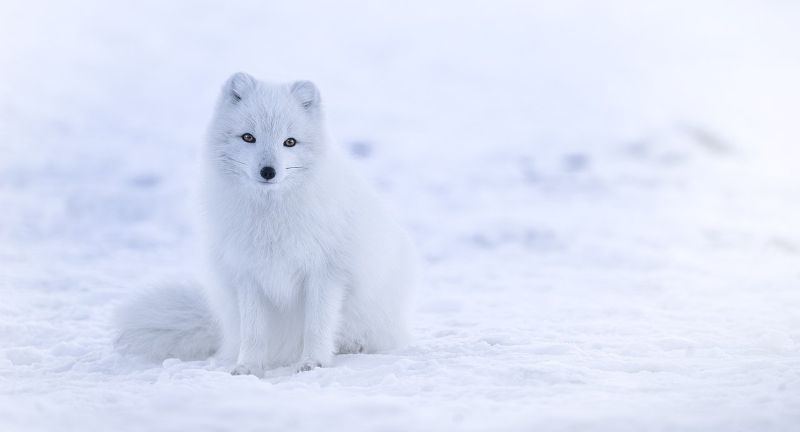
Wikipedia
Arctic foxes exhibit remarkable adaptations to thrive in their frigid habitat, from their seasonal fur color changes to their acute sense of hearing. Their white winter coats provide effective camouflage against snow, while their brown summer fur blends seamlessly with tundra terrain. With a keen sense of hearing, they skillfully locate prey beneath the snow, and their practice of storing surplus food underground demonstrates their resourcefulness in enduring harsh Arctic conditions and fluctuating food availability.
Mimic Octopus
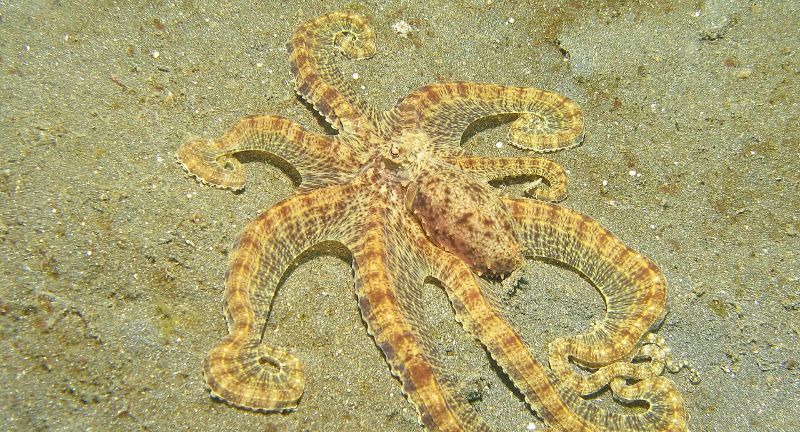
Wikipedia
The mimic octopus astounds scientists with its extraordinary talent for camouflage, effortlessly mimicking over 15 marine species to evade predators and ambush prey. By carefully assessing its environment, it selects the most effective mimicry to suit prevailing threats or opportunities. This remarkable behavioral flexibility underscores the octopus’s intelligence and adaptability, positioning it as one of the ocean’s most captivating and enigmatic creatures.
Cockroaches
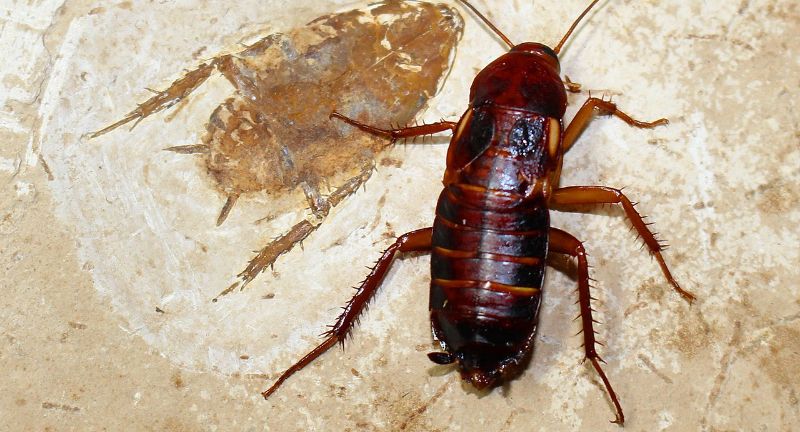
Wikipedia
Cockroaches, renowned for their resilience, can withstand high radiation levels and extreme temperatures, owing to their open circulatory system and the ability to respire through small holes in each body segment. Their ability to survive for weeks without food and several days without their heads underscores their adaptability and robust physiology. With rapid reproduction rates, cockroaches persist across diverse environments, showcasing their unparalleled ability to thrive where other species struggle.
Tardigrades
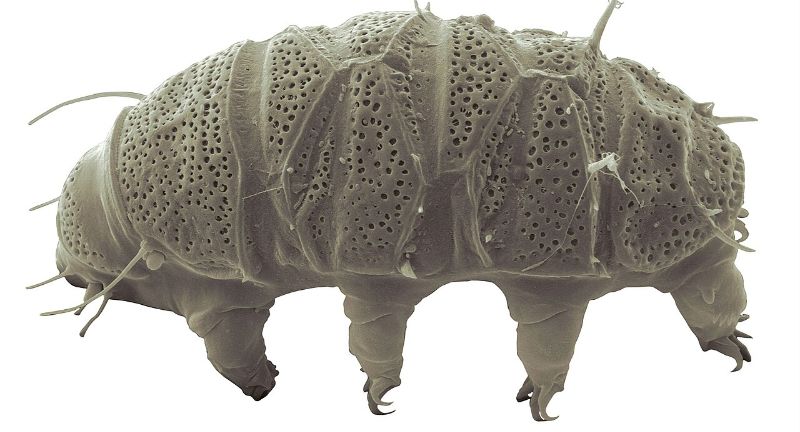
Wikipedia
Tardigrades, commonly known as water bears, exhibit extraordinary resilience, surviving in environments fatal to most life forms, including space vacuum, high radiation, and extreme temperatures. They enter cryptobiosis, almost halting their metabolism, enabling them to endure harsh conditions for extended periods. This exceptional survival mechanism renders tardigrades one of the hardiest known species, capable of withstanding conditions surpassing even the extremes found on Earth.
Ants
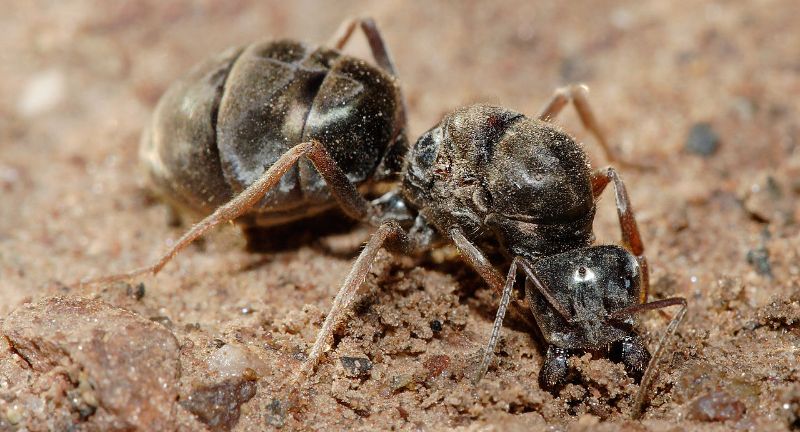
Wikipedia
Ants showcase impressive survival tactics, from their incredible strength to their sophisticated social structures. Species like the Saharan silver ant adapt to extreme temperatures, foraging during the hottest part of the day to avoid predators. Utilizing the sun and visual cues for navigation reflects their advanced spatial awareness and memory. Their cooperative nature, division of labor, and effective communication enable ants to thrive in diverse habitats, ensuring efficient food acquisition and colony defense.
Conclusion
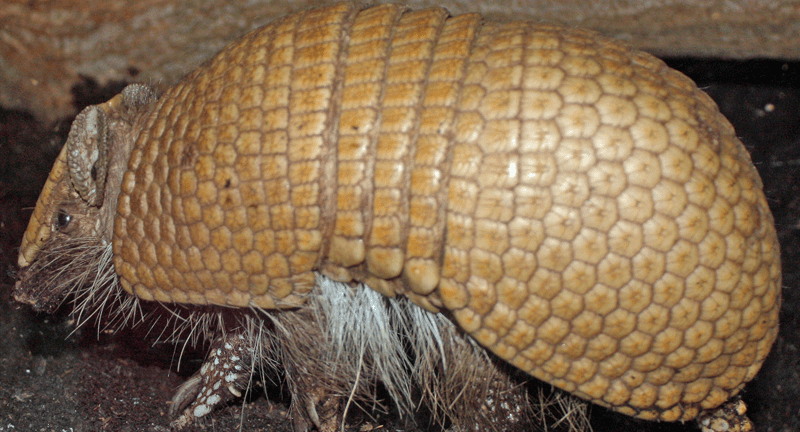
Wikipedia
The remarkable survival strategies exhibited by these 30 animals showcase the extraordinary adaptability and resilience inherent in life on Earth. From the ocean depths to towering mountain peaks, each species has evolved unique tactics to navigate and thrive in their respective environments. These tales of adaptation and endurance not only celebrate the diversity of life but also emphasize the critical importance of conserving the fragile ecosystems that sustain these intricate survival mechanisms. As we marvel at the ingenuity of nature, it’s imperative that we fulfill our duty to safeguard these habitats, ensuring the continued flourishing of life for future generations.
More Amazing Animals+
-
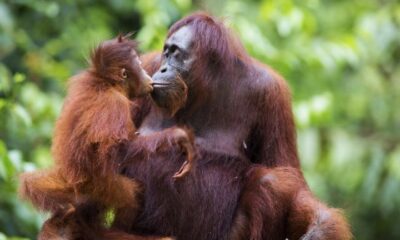

Motherhood in the Wild: From Overachievers to Epic Failures
-


Alligator arrest outside of a school in Charleston, SC
-


Elk making a break for the trees.
-
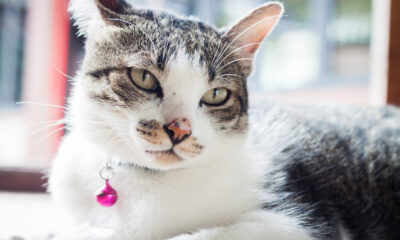

These are the snacks experts say cats are really into…
-
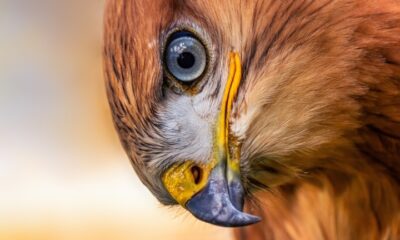

Hawk Yeah! 26 Facts About The Best Birds
-


25 Deadliest Sea Creatures In The World
-


Triple otter on the rocks
-


20 Amazing Facts About Alpacas and Llamas
-


28 Most Colorful Critters From Around The World
-
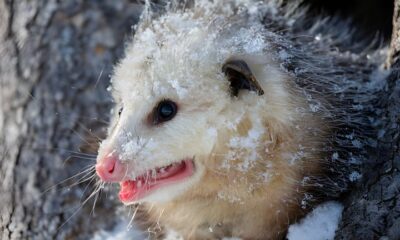

20 ‘Pointless’ Animals That Actually Have Important Day Jobs
-
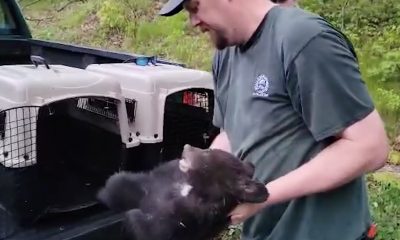

More – Orphaned bear cubs playing in tree and post-rescue…
-


Why We Love Penguins
